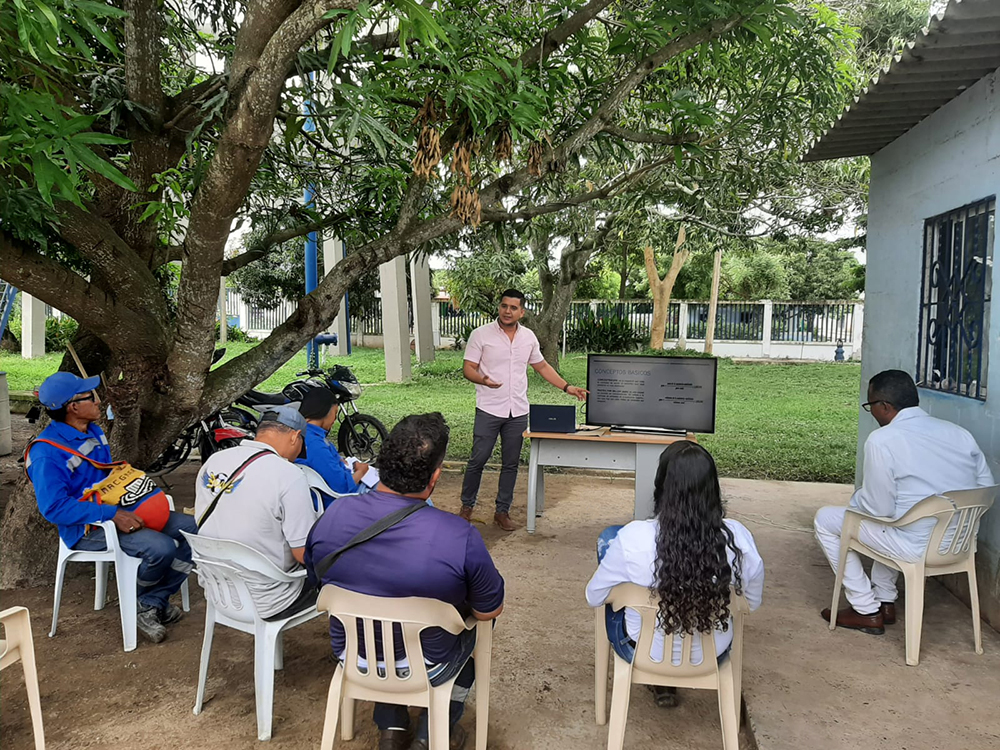Meeting the targets to provide access to drinking water, especially in developing countries, has highlighted the need to generate solutions which guarantee efficient and sustainable water treatment processes, within a context of integrated water resource management.
Water is key to the economic and social growth of countries. This is why different international organizations, such as the World Bank and the United Nations, have underscored the fact that utilities must make the necessary investments and interventions to strengthen their ability to supply safe and sustainable drinking water. “These interventions must be accompanied by policies to promote water efficiency and improve water allocation” (World Bank, 2021).
This interview with Alfredo Castro, Production Manager at Idrica Colombia, summarizes the main conclusions of the diagnosis and optimization process being carried out at the drinking water treatment plants belonging to Aguas del Sur del Atlántico E.S.P. (Aqsur), by the joint venture between Idrica (Aguas de Valencia) and Naunet (Saur).
What were the main features encountered during the process?
Aqsur has five conventional plants located in the municipalities of Luruaco, Repelón, Campo de la Cruz, Santa Lucía and Manatí, and two compact plants in the towns of Compuertas and Rotinet.
These differ from each other in terms of their process units (flocculation, sedimentation, filtration and disinfection), as well as in their supply sources, which made it necessary to monitor operations individually.
What strategies were implemented and how did they boost the efficiency of the water treatment processes?
The project started with a preliminary assessment to check the operating conditions of each plant through visits and the verification of operating parameters. The inlet flow levels, the concentration, dosage and volume of chemical products, and the quality attributes related to pH, color, turbidity and the presence of chlorine in the water were all assessed. Similarly, the operating conditions of each plant were checked according to the water catchment conditions, pumping hours and overall performance.
Based on this initial assessment, a work plan was drawn up to provide technical support and implement the improvement measures required in each case. Likewise, risks were assessed through a Failure Modes and Effect Analysis (FMEA) to check whether the measures were viable.
What is the key to plant optimization?
I think that the three main things required to optimize a water treatment plants are the review of the infrastructure’s technological and technical operations, the optimization of chemical dosage parameters; and last but not least, ongoing staff training. For plants to function properly, operators must be prepared and need to understand the process so that they can make better decisions when a problem occurs.
What are the main financial and sustainability benefits achieved?
Each treatment plant has its own particular specifications. Pinpointing these details enables us to make a proper diagnosis according to each client’s specific needs, which can be financial, technical or related to quality, staff or water production, to cite a few examples, and all of them obviously bring financial benefits.
In addition, it is important to note that the implementation and sustainability of these measures depends to a large extent on human resources. Therefore, it is essential to carry out constant training, including practical workshops that help the staff in charge make good decisions, applying the concepts learned, and even proposing ideas for improvement.
In economic and financial terms, plant operating costs have been reduced by 32% per month in Repelón and by 20% in Luruaco, thanks to the adjustments made in chemical dosing, which have not affected the quality of the treated water or service continuity. Similarly, by implementing the proposed measures, operating savings of up to 42% per month have been estimated in Manatí.
Read more Idrica Articles and News on H2O Global News. Do you have an article or video that you would like to share? Submit your article here or keep up with the latest news from the water industry and wastewater industry by subscribing to our weekly newsletter







